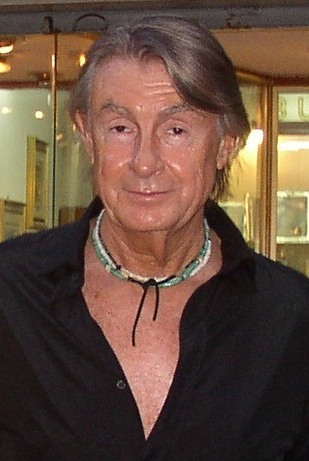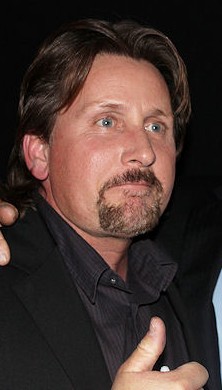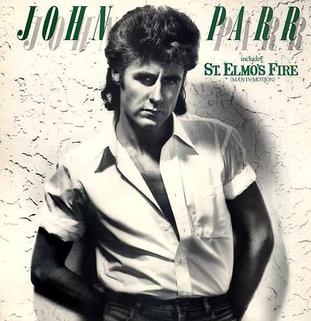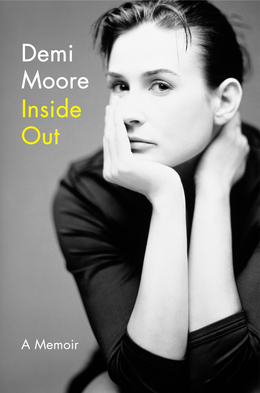
The Breakfast Club is a 1985 American indie teen coming-of-age comedy-drama film written, produced, and directed by John Hughes. It stars Emilio Estevez, Paul Gleason, Anthony Michael Hall, Judd Nelson, Molly Ringwald, and Ally Sheedy. The film tells the story of five teenagers from different high school cliques who serve a Saturday detention overseen by their authoritarian vice principal.

Demi Gene Moore is an American actress and producer. She first gained attention on daytime television, before breaking out as a film star in the 1980s. By the mid 1990s, she was the highest-paid actress at the time. She has earned several accolades throughout her career, including nominations for an Emmy Award, two Golden Globe Awards and a Screen Actors Guild Award.

Joel T. Schumacher was an American film director, producer and screenwriter. Raised in New York City by his mother, Schumacher graduated from Parsons School of Design and originally became a fashion designer. He first entered filmmaking as a production and costume designer before gaining writing credits on Car Wash, Sparkle, and The Wiz.
The Brat Pack is a nickname given to a group of young actors who frequently appeared together in teen-oriented coming-of-age films in the 1980s. The term "Brat Pack", a play on the Rat Pack from the 1950s and 1960s, was first popularized in a 1985 New York magazine cover story, which described a group of highly successful film stars in their early twenties. David Blum wrote the article after witnessing several young actors being mobbed by groupies at Los Angeles' Hard Rock Cafe. The group has been characterized by the partying of members such as Demi Moore, Emilio Estevez, Rob Lowe, and Judd Nelson.

St. Elmo's fire is a weather phenomenon in which luminous plasma is created by a corona discharge from a rod-like object such as a mast, spire, chimney, or animal horn in an atmospheric electric field. It has also been observed on the leading edges of airplanes, as in the case of British Airways Flight 009, and by U.S. Air Force pilots.

Emilio Estevez is an American actor and filmmaker.

Judd Asher Nelson is an American actor. He is best known for his roles as Hot Rod/Rodimus Prime in The Transformers: The Movie, John Bender in The Breakfast Club, Alec Newbury in St. Elmo's Fire, Alex in Cybermutt, Joe Hunt in Billionaire Boys Club, Nick Peretti in New Jack City, Billy Beretti in Empire, and Jack Richmond in the television series Suddenly Susan.

Alexandra Elizabeth Sheedy is an American actress. She made her feature film debut in Bad Boys (1983) and came to prominence as a member of the Brat Pack with roles in Oxford Blues (1984), The Breakfast Club (1985), St. Elmo's Fire (1985), and Blue City (1986). She received three Saturn Award nominations for Best Actress for her performances in WarGames (1983), Fear (1990), and Man's Best Friend (1993). For playing a drug-addicted lesbian photographer in High Art (1998), Sheedy won the Independent Spirit Award for Best Female Lead. She also starred in the films Twice in a Lifetime (1985), Short Circuit (1986), Betsy's Wedding (1990), Only the Lonely (1991), and Life During Wartime (2009), as well as the series Single Drunk Female (2022–2023).

John Stephen Parr is an English musician, singer, and songwriter, best known for his 1985 single "St. Elmo's Fire ", charting at number one in the US and number six in the UK and for his 1984 US number six rock single "Naughty Naughty". He has written and performed ten major motion-picture theme songs, including the themes for Three Men and a Baby and The Running Man. Parr has sold over 10 million albums and was nominated for a Grammy award for "St. Elmo's Fire" in 1985.

Mary Megan Winningham, known professionally as Mare Winningham, is an American actress and singer-songwriter. She is the recipient of two Primetime Emmy Awards and has been nominated for an Academy Award, two Golden Globe Awards, and two Tony Awards.

"St. Elmo's Fire " is a song by British singer John Parr from the 1985 film St. Elmo's Fire. It hit No. 1 on the US Billboard Hot 100 chart on 7 September 1985, remaining there for two weeks. It was the main theme for Joel Schumacher's film, and first single from the soundtrack. The song was created and edited within 24 hours.

Lauren Diane Shuler Donner is an American film producer, who specializes in mainstream youth and family-oriented entertainment. She owned The Donners' Company with her late husband, director Richard Donner. Her films have grossed about $5.5 billion worldwide including major contributions from the X-Men film series.
St. Elmo's fire is an electrical phenomenon.

Blue City is a 1986 American action thriller film directed by Michelle Manning and starring Judd Nelson, Ally Sheedy, and David Caruso. It is based on Ross Macdonald's 1947 novel of the same name about a young man who returns to a corrupt small town in Florida to avenge the death of his father.
Ned Stone Tanen was an American film studio executive. The films he produced were some of the most popular films of the 1970s and 1980s, including the 2 key Brat Pack films The Breakfast Club and St. Elmo's Fire, as well as Smokey and the Bandit, American Graffiti, Coal Miner's Daughter, The Deer Hunter, Crocodile Dundee, Top Gun, Animal House, and many others.

Wendy June Saddington, also known as Gandharvika Dasi, was an Australian blues, soul and jazz singer, and was in the bands Chain, Copperwine and the Wendy Saddington Band. She wrote for teen pop newspaper Go-Set from September 1969 to September 1970 as an agony aunt in her weekly "Takes Care of Business" column, and as a feature writer. Saddington had Top 30 chart success with her 1972 solo single "Looking Through a Window", which was written and produced by Billy Thorpe and Warren Morgan of the Aztecs. After adopting Krishna Consciousness in the 1970s she took the name Gandharvika Dasi. In March 2013 she was diagnosed with oesophageal cancer and died in June, aged 63.

John Parr is the debut album by John Parr, released in 1984. It contains 3 Billboard Top 100 songs: "Magical" which peaked at #73, "Love Grammar" at #89, and the biggest of the three, "Naughty Naughty", which peaked at #23 and was a top 10 AOR hit.

"Love Grammar" is a song by English singer and musician John Parr, released in 1985 as the third single from his self-titled debut album (1984). The song was written and produced by Parr.

Inside Out is a 2019 memoir by American actress Demi Moore. It was published on September 24, 2019, by Harper, an imprint of HarperCollins. In the memoir, Moore discusses her childhood, relationships and personal struggles.

"Two Hearts" is a song by English singer and musician John Parr, released in 1986 as a single from the soundtrack of the 1986 American sports drama film American Anthem. The song, written and produced by Parr, was also included on Parr's second studio album Running the Endless Mile (1986).

















